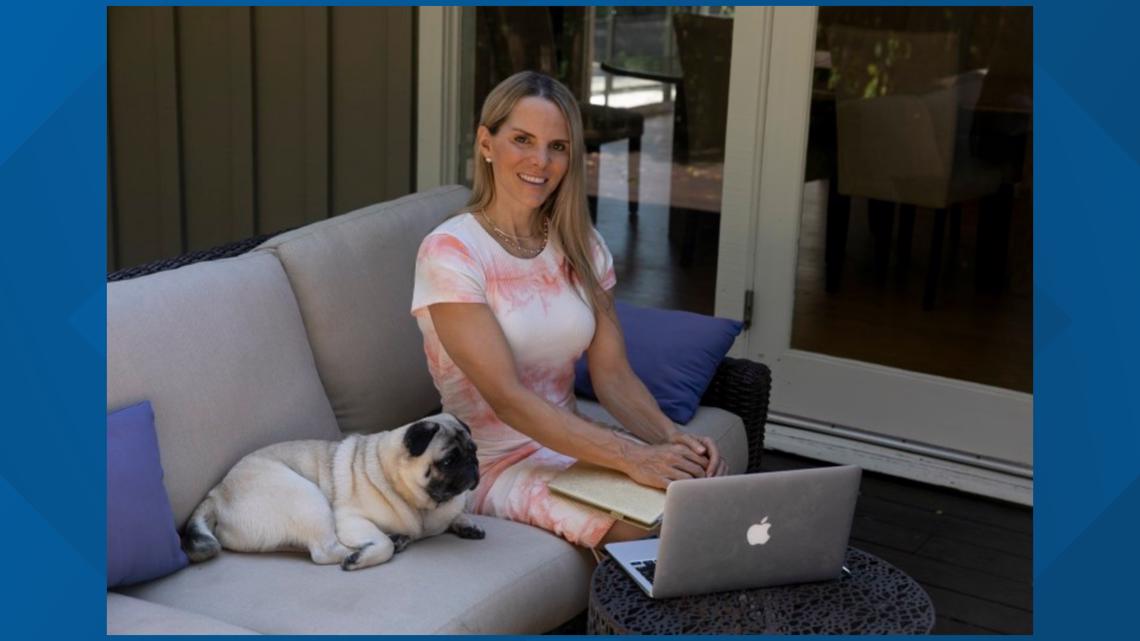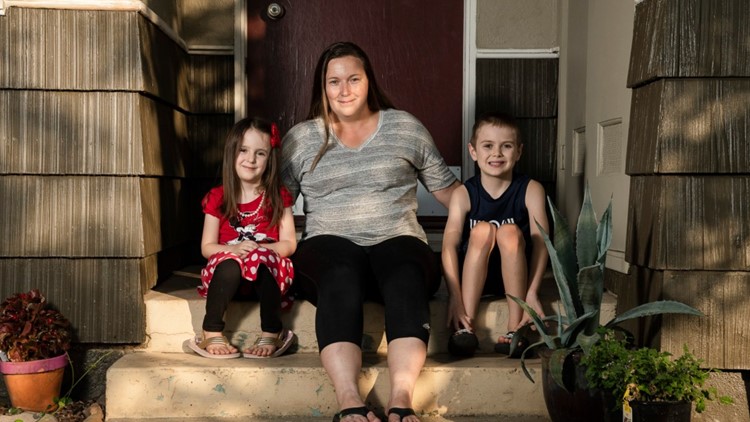CALIFORNIA, USA — They worry about who will care for the children and how far their education will slide.
They anxiously await details on what distance learning will actually look like this fall, hopeful but skeptical that there will be more structure and support than a spring of crisis education that left many dissatisfied.
They’re furiously networking on Facebook and Nextdoor in the tens of thousands to form learning pods or arrange childcare. They’ve placed a huge number of calls to local tutoring services in search of help. Some wonder who will watch their child — let alone supervise online classes — while they work essential jobs.
Parents of more than 5.9 million California K-12 children are scrambling to adapt to a new reality without schools to send their children to. Ninety six percent of the state’s total enrollment calls one of the 37 counties currently on the state’s watch list home. Many students still do not have computers and internet essential for connecting online, and research has increasingly shown the inequitable toll distance learning took on disadvantaged students who lacked opportunities to meaningfully engage in learning.
Many teachers and parents remain worried that physically reopening schools while coronavirus cases surge in most of the state will endanger educators and students and further spread the virus. Schools, which spent weeks devising plans for socially distant classrooms, still lack financial support from the federal government they say they need to safely reopen. Last week, as coronavirus cases continued to rise in California, Gov. Gavin Newsom unveiled new requirements that effectively shut the door for most schools to begin school with in-person instruction until their respective counties stabilize infections and hospitalizations.
Now, millions of working parents like Rebecca Hill in Chico have to wade through constantly evolving scenarios about the school year ahead, weighing the twin stressors of how prolonged campus closures will affect their childrens’ learning and mental well-being, as well as their own livelihoods.


RELATED:
Hill’s son and daughter will start second grade and kindergarten in less than a month under distance learning after Butte County landed last week on the state’s COVID-19 watch list, which now governs whether local public and private schools can physically reopen for in-person instruction.
But Hill, 38, is also back at work as a code inspector in neighboring Yuba County, where she spends her days scoping out buildings, nuisance calls and illegal marijuana grows in the rural northern county.
A few weeks ago, Hill and her husband debated whether to opt for morning or afternoon in-person classes under proposed hybrid scheduling — an anxiety-inducing prospect since her husband is immuno-compromised and receives dialysis three days a week. After their district said last week that it would start the year online, the question became whether to enroll full-time in an online school offered by the district, which Hill is leaning toward to minimize chances that her husband will get sick if and when schools do re-open in person. Homeschooling might be an option if they had the time.
One thing is for sure: “We definitely don’t have the ability for me to not work,” said Hill, the family breadwinner.
Unanswered questions
In Los Angeles, Tunette Powell’s three sons will begin the new year under distance learning, but details so far remain sparse three weeks before schools begin instruction, adding stress for how she and her husband, an essential worker, will balance work and co-teaching their kids.
As it did when it initially closed schools in mid-March, L.A. Unified, a massive district of 600,000 students, created a ripple effect across the state when it said July 13 that it would begin the year with full-time distance learning, citing surging cases in the county.
Superintendent Austin Beutner and school leaders across California have told families that distance learning programs will be more rigorous and robust than what schools offered this spring. New statewide standards for distance learning will attempt to hold schools accountable, and students will be graded for their work.
A recent survey by Speak Up, a Los Angeles-based parent advocacy group, found wide disparities in the amount of live instruction Black and Latino students received this spring compared with their white peers. Many were dissatisfied with how little live, or synchronous, instruction their students received, and the group has called on the district to gather input from parents over how to improve distance learning.
Several critical questions remain unanswered for Powell and other parents as the first day of school draws closer.
What will the school day look like? Will there be a consistent start time every day to plan her workday around? How much face time will her kids get with their teachers, and will her 11-year-old receive more live interaction than the weekly, one-hour check-ins from this spring? Will the district distribute newer devices to replace the outdated ones that resulted in several technical headaches last spring? Will there be support for Powell’s kindergartner and other young students not yet adept at using technology to learn?
“I don’t know any of that. I know none of that. It worries me,” said Powell, interim director of UCLA’s Parent Project, a think tank aiming to improve parent engagement in schools.
Powell’s oldest son, the 11-year-old entering sixth grade, is not enthusiastic about continuing distance learning. She’s especially worried about her youngest son, a 5-year-old who will start kindergarten at Baldwin Hills Elementary. Many academics believe younger students should be among the most prioritized groups for getting into physical classrooms once it’s reasonably safe to do so, arguing that elementary students stand the most to lose from being away from classrooms.
“He knows he’s going to a new school,” Powell said, “but I don’t think he’s fully grasped that going to a new school is going to happen in his room, so that’s been difficult.”
DIY education
With schools across the country planning for distance learning starts, parent interest in arranging “learning pods,” in which small groups of students are taught by a tutor or teacher, has grown.
Shannon Mulligan, owner of Marin Tutors, has seen that spontaneous interest firsthand.
“As soon as Gov. Newsom announced schools weren’t going to open, my phone rang every day, all day, for four days in a row,” Mulligan said, with parents inquiring about teachers or tutors willing to participate in a learning pod.


RELATED:
The pod concept has attracted everyone from working class moms holding down full-time jobs looking for tutors to help guide their students during distance learning to a dad looking to secure a teacher for more than 60 hours a month to teach curriculum supplementing what his kids learn online.
Mulligan’s tutoring company, which also works with the county to offer services for foster youth, charges hourly rates that vary depending on educators’ experience. Individual rates for parents go down as students are added to the pod, with a cap of five kids. Once inside a pod, everyone wears masks outside, socially distanced.
Traffic on Mulligan’s website has increased by 75% since Newsom’s July 17 announcement. She said many calls come from parents with incoming kindergartners wary of how the tots will fare learning remotely.
“So many (parents) said to me when they called, ‘I didn’t want to have this happen, but I’m forced to homeschool now,’” Mulligan said.
Insufficient support
Comprehensive current data on how working parents are adapting to school closures remains elusive. It’s unclear how many parents statewide have been laid off, reduced work hours or quit their jobs and filed for unemployment, since neither the federal Bureau of Labor Statistics or the California Employment Development Department include parental status in monthly job reports. That’s especially true for essential workers, who in California are disproportionately Black and Latino and have experienced higher infection rates, since policy analysts usually rely on longer-term Census surveys to gauge economic status.
“I don’t know if we do know a lot about those families, to be honest,” said Kristin Schumacher, a senior policy analyst at the California Budget & Policy Center, who is also juggling her 6-year-old’s Zoom classes while she works remotely. “The reality is a lot of families are really scrambling under impossible situations to make this work.”
In Santa Cruz County, Erendira Guerrero and her team at Encompass Community Services are trying to help fill the gaps for parents who work at farms, grocery stores, cleaning services and medical offices with remote versions of their Head Start and Papás program for fathers. Wellness check-ins are now done by phone or video chat, and more than 600 care packages have been distributed with diapers, toys and learning aids like puppets, bubbles and songs in English and Spanish.
Still, the pandemic has exposed major holes in systems like unemployment, rent assistance and health care, especially for undocumented families.
“A big part of our program’s work is focused on connecting parents with resources in the community to support their needs,” Guerrero said. “Some of our families are just not as comfortable sharing their needs over the phone or video.”
Existing regulations offer limited protection for working parents considering requesting time off or other alternatives to juggle school and jobs. For companies with 25 or more employees, California workers are guaranteed five days of job protection for emergencies under the Family School Partnership Act. The California Family Rights Act allows workers at companies with 50 or more employees to take 12 weeks off for a new child or family illness. In March, the federal government enacted the Families First Coronavirus Response Act to extend 12 weeks off for school conflicts, but it only applies to companies with 500 or fewer employees and excludes industries including health care providers.
RELATED:
For many families, that leaves “no great options,” said Katherine Wutchiett, senior staff attorney for San Francisco advocacy group Legal Aid at Work.
“We always recommend talking with your employer, seeing if there’s something that you can work out with them,” Wutchiett said. But outside those limited exceptions, “At the end of the day, if the employer says you have to be at work and they cannot be at work… there isn’t any legal obligation on their employer’s part to continue holding their job.”
Education policy advocate and former teacher Elliot Haspel floated the idea of a “Parent Protection Program,” modeled off forgivable loans made to businesses under the federal Paycheck Protection Program, but the prospect of major reform is uncertain. A bill from Santa Barbara Democrat Hannah-Beth Jackson, S.B. 1383, would expand state requirements for employers to provide 12 weeks of unpaid family leave and was approved by the state Senate but still requires sign off in the Assembly. Presumptive Democratic Presidential nominee Joe Biden’s plan for universal childcare, introduced this week, could help, but is several months away at best.
In the meantime, remote schools offer a prime example of the state’s increasingly polarized economy.
Some employees of deep-pocketed companies, especially in the tech industry, are offered company-funded online tools, additional paid time off or flexible schedules. Many essential workers have no recourse. The toll on women’s employment and the gender wage gap, kids’ educational attainment and costs for businesses seeing employees leave the workforce are just the beginning.
“What economists don’t consider often enough is the economic cost of duress,” said Tracey Grose, founding principal of Bay Area business consultancy Next Curve Strategy, who herself helped supervise Zoom classes for the children of two working neighbors in the fall. “When a family is stressed out trying to keep a roof over their heads, they cannot be the best parents they can be.”
Felecia Przybyla, a Sacramento County mom, is trying to answer long-term questions on short deadlines before classes resume. She works remotely for a company out of state while her husband reports to his job with the county, leaving her to juggle her own work calls and her three elementary-age childrens’ need for instruction and technology help. While she doesn’t want to rely on the state, Przybyla has considered leaving her job to focus on school and file for unemployment with expanded aid available to contractors like her.
So far, she’s held off.
“We’re hoping to buy a house in the next six months, and I need to have a job,” Przybyla said. “I don’t want to give that up, either, and I don’t think I should have to be put in a position to decide between a job that provides for our family and my kids’ schooling.”
CALmatters.org is a nonprofit, nonpartisan media venture explaining California policies and politics



